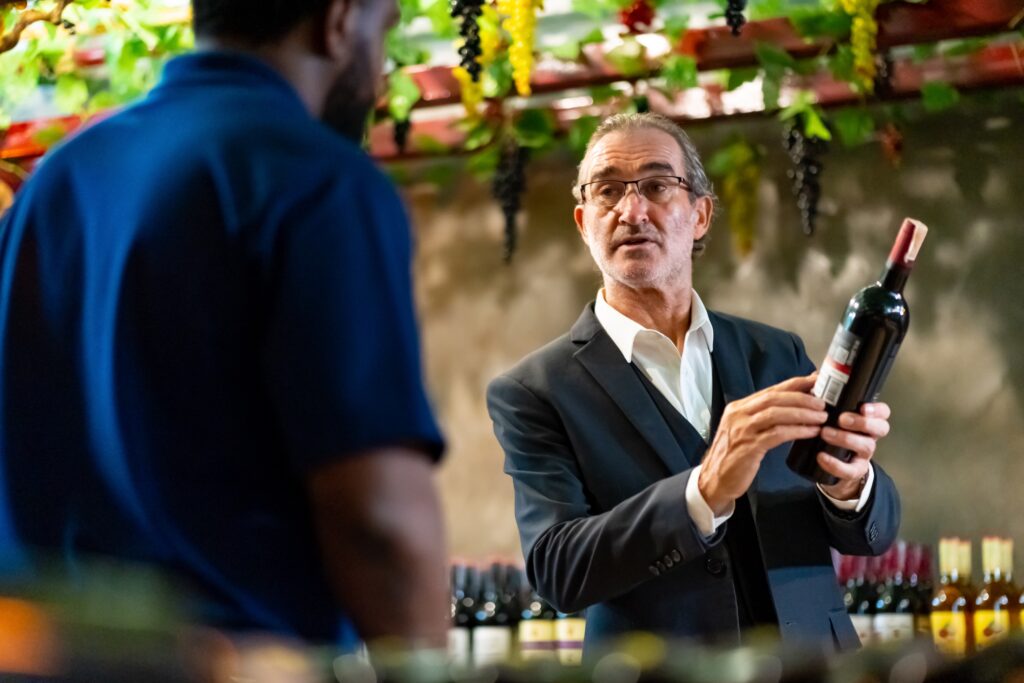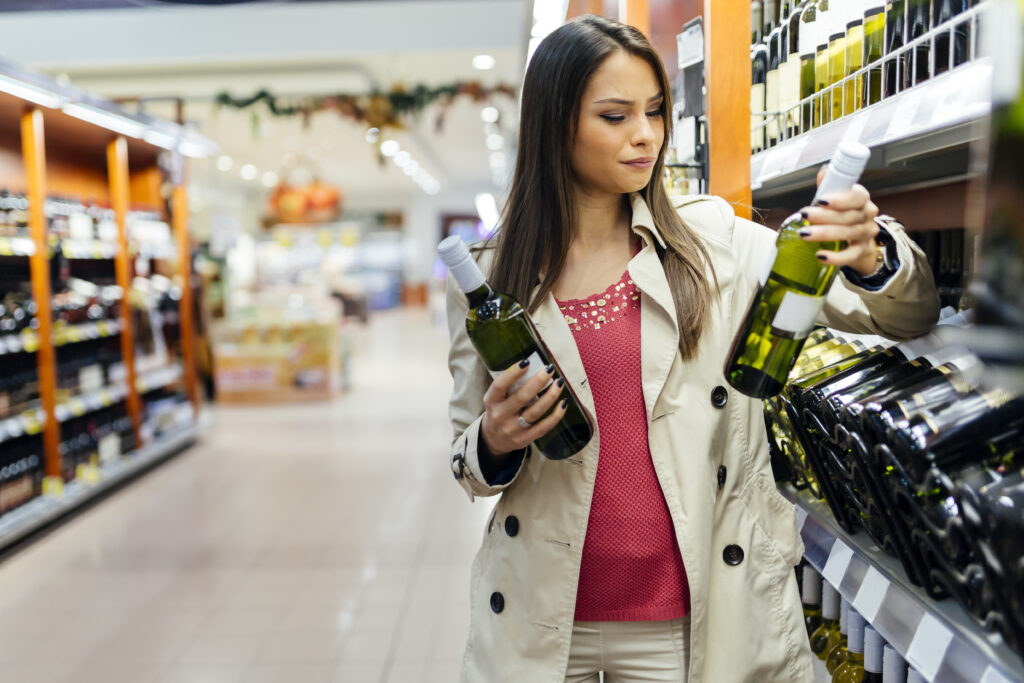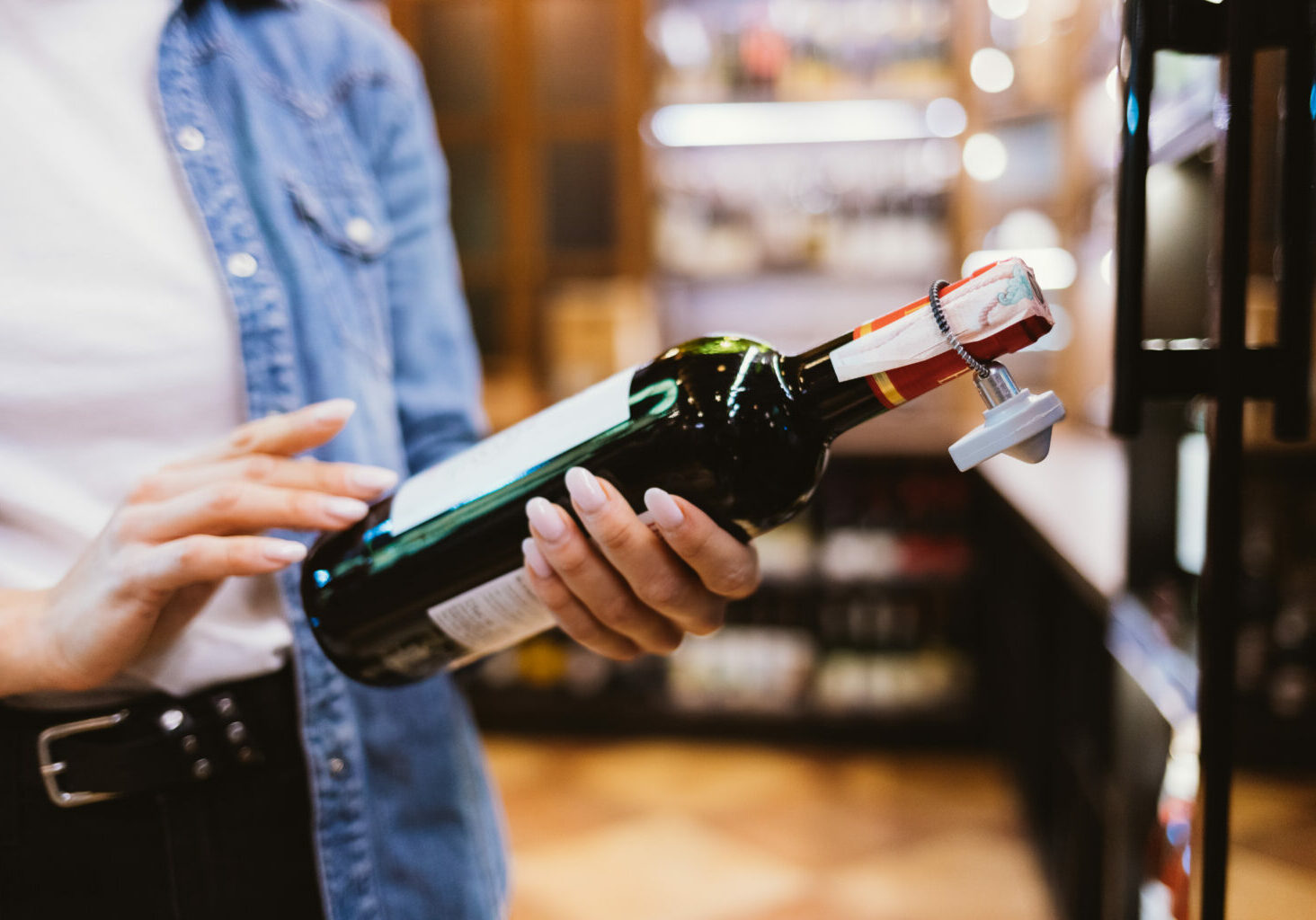Last Updated on November 27, 2023 by
A paradigm shift is on the horizon.
In the United States, the art of wine labeling has long been focused on tradition, aesthetics, and legal requirements pertaining to origin, alcohol content, and brand identity. However, the European Union’s recent decision to mandate ingredient and nutrition labeling for wine signals a potential change in global wine marketing and consumer information standards.
As new wine labeling regulations were set and are expected to roll out beginning December, it has been one of the major concerns of many wineries in the US. The complexities of this shift have been a hot topic in the recent Legends Behind The Craft episode with Howard Marx, CEO and founder of Vinvinea. Marx pointed out how his company, Vinvinea, is preparing for this shift the smart way – by using QR codes in their wine labels: “The EU law is very clear. If you don’t opt to use an electronic form then you must place it on your physical label. To place all of this information on a physical label is going to require quite a label because there’s a lot of information that has to be placed.”
Read on as we dig deeper into these regulations and how these emerging trends might reshape the U.S. wine industry.
The Current State of Wine Labeling Regulations in the U.S.
Unlike many food and beverage products, wine in the United States has not traditionally been subject to federal requirements for detailed ingredient and nutrition labeling. Governed by the Alcohol and Tobacco Tax and Trade Bureau (TTB) rather than the Food and Drug Administration (FDA), wine labels have largely remained focused on basic product identification and legal compliance.

This approach, however, contrasts sharply with the European Union’s new regulations, which require comprehensive disclosure, potentially influencing international trade and consumer expectations. This potential shift is not just about aligning with international standards but also responding to a domestic market that is increasingly vocal about its right to know what is in the products it consumes.
Consumers’ Evolving Preferences In Wine Labeling
Recent research, notably by the Wine Market Council in collaboration with Merrill Research, reveals a changing landscape in consumer preferences. This study found that a significant portion — about 38% of the 1,005 US wine consumer respondents – support the inclusion of ingredient lists on wine labels. This number indicates a growing consumer desire for transparency in the composition of their beverages. Interestingly, the demand for such information varies across different alcoholic beverages, with wine at the lower end of the spectrum compared to ready-to-drink (RTD) cocktails and hard seltzers.
Nutrition labeling also garners attention, especially among the younger demographic. In a Forbes article, Christian Miller, the Research Director of Wine Market Council said in a statement that about 25% of the general population and 33% of consumers under 40 express interest in seeing nutritional information on wine labels. These numbers clearly signify a generational shift in health consciousness.
Young Consumers Leading The Health and Wellness Trend
This increasing demand for detailed labeling aligns with the broader health and wellness trend that has gained momentum in recent years. The recent pandemic can be among the reasons for this, as significantly after, a heightened awareness around health, diet, and the ingredients in consumables have emerged. Consumers, especially the younger generation, are not just seeking quality and flavor in their wine choices but also transparency regarding their composition and nutritional profile.
Recent research underscores the profound impact of transparency on brand loyalty, especially among millennials. Today’s brands are required to divulge information at an unparalleled depth, extending well beyond traditional advertising and mandatory disclosures. This shift is particularly crucial for engaging with the millennial demographic, a group that values openness and honesty in their brand interactions.
The findings are convincing: a staggering 94% of respondents indicated a likelihood of remaining loyal to brands that exemplify complete transparency. But the good news is that this trend is not fleeting; when millennials switch to a more transparent brand, their loyalty tends to be enduring.

9 Benefits of the New Wine Labeling Regulations
Despite these challenges, there are also significant advantages to embracing transparent labeling. Correcting common misconceptions about wine, such as its sugar content and caloric value, are just some of the things that can benefit the wine industry as a whole. Here are just a few benefits of transparent labeling:
1. Enhancing Consumer Trust
Accurate labeling builds trust by showing that a brand is committed to honesty and transparency. This can foster a stronger, more loyal relationship between the winery and its customers.
2. Dispelling Myths and Misconceptions
Transparent labeling can correct common misconceptions about wine. The study pointed out that nearly half of U.S. wine consumers erroneously believe wine is high in added sugar, a myth easily dispelled with clear labeling. Clear labeling can provide factual information, clarifying these misunderstandings.
3. Attracting Health-Conscious Consumers
Detailed nutritional information can attract consumers who are mindful of their dietary intake. By knowing the calorie, sugar, and carbohydrate content, health-conscious individuals can make more informed choices about their wine consumption.
4. Differentiating Products in a Competitive Market
In a market flooded with options, wines with transparent labels can stand out. They offer an additional value proposition to consumers seeking clarity about what they consume.
5. Improving Consumer Safety
For individuals with allergies or dietary restrictions, transparent labeling is crucial. It ensures that consumers can avoid products containing allergens or ingredients that conflict with their dietary preferences or needs.
6. Aligning with Global Trends and Standards
As international markets, like the EU, adopt stricter labeling requirements, U.S. wineries that proactively embrace similar standards can more easily enter or maintain their presence in these markets.
Facilitating Educated Purchasing Decisions: Detailed labels can serve as educational tools, helping consumers learn more about wine varieties, winemaking processes, and how these factors influence the taste and quality of the wine.
7. Promoting Responsible Drinking
By providing clear information about alcohol content and serving size, transparent labels can play a role in promoting responsible consumption habits.
8. Supporting Marketing and Brand Storytelling
Transparent labeling can be integrated into a brand’s narrative, highlighting commitment to quality, natural ingredients, or sustainable practices, which can be appealing to many modern consumers.
9. Adapting to Consumer Demands for Sustainability
Labels that include information about sustainable, organic, or biodynamic farming practices can appeal to environmentally conscious consumers, aligning with the growing demand for sustainable products.

Challenges for Wineries
Implementing detailed ingredient and nutrition labeling presents several challenges for wineries. One of the primary concerns is the administrative and financial burden of redesigning labels and packaging to include this additional information. Furthermore, changes to labels require TTB approval, adding another layer of complexity and time to the process. Additionally, the revelation of certain additives, though approved and safe, might be unsettling to consumers who are not familiar with winemaking processes. This could potentially impact consumer perceptions and sales, particularly for smaller wineries that lack the resources to effectively communicate these changes to their customer base.
As for Marx and the people behind Vivinea, these challenges may not be easy, but necessary– and they have long been preparing for it: “So, there’s plenty, plenty, plenty of work. We have a worldwide sales team as well doing a great job. And we have a development team doing an incredible job [in] making sure that each of the QR codes is unique. And so there’s hundreds and hundreds of QR codes that will be generated. So it’s quite a feat that we’ve done.” He’s very positive about adapting these new regulations as they offer new solutions to the wine industry as a whole.
A Step Away From Tradition and Into The Future
As the U.S. wine industry stands at the crossroads of tradition and evolving consumer expectations, the potential for a new standard in wine labeling is significant. Embracing transparency not only aligns with global trends, but also resonates with a growing segment of the market that values health, wellness, and informed choices.
As the industry navigates these changes, the ultimate goal should be a harmonious balance between regulatory compliance, consumer satisfaction, and the preservation of the art and craft that is winemaking.
